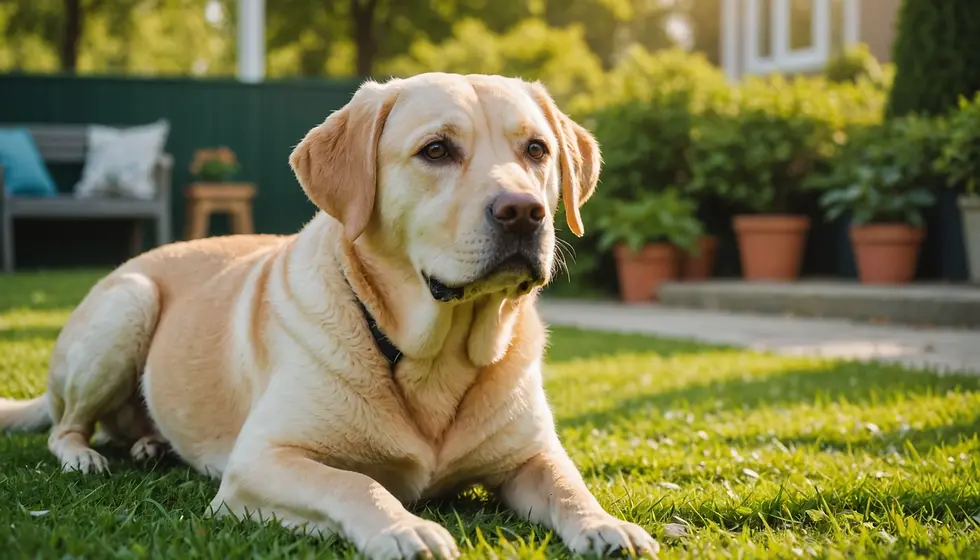Ruff Love: How Positive Reinforcement Makes Rescued Pups Unleash Their Best Behavior
- Dec 22, 2024
- 4 min read
Rescuing a dog is a heartwarming experience filled with tail wags and sloppy kisses. Yet, many rescued pups come from challenging backgrounds that can lead to behavioral issues. This is where positive reinforcement training shines. Not only does it help create trust between you and your rescue dog, but it encourages them to show their best behavior.
Understanding Positive Reinforcement
Positive reinforcement focuses on rewarding desirable behaviors instead of punishing unwanted ones. This method uses treats, praise, toys, or affection to encourage good actions. The concept is straightforward: when your dog performs a desired behavior, they receive a reward, reinforcing that behavior.
In contrast, traditional training methods often rely on negative reinforcement or punishment. Such approaches can instill fear and anxiety, leading to the very behaviors you wish to eliminate. This method ultimately damages the trust between a dog and their owner.
The Benefits of Positive Reinforcement for Rescue Dogs
While positive reinforcement is beneficial for all dogs, it is particularly effective for those that have experienced trauma or neglect. Here are some key benefits:
1. Builds Trust
Using positive reinforcement teaches your dog to associate you with happiness and safety. For example, dogs that might cower at human interaction can gradually learn to trust you through consistent rewards for positive behavior. Over time, they will not only feel secure but also show improved behavior.
2. Reduces Anxiety and Fear
Harsh training methods can make anxiety worse in rescue dogs. Positive reinforcement fosters a safe learning environment. Research shows that dogs trained with positive methods are 70% less likely to exhibit fear-related behaviors. As your dog sees that good actions lead to rewards, their confidence increases, reducing fear-driven behaviors.
3. Strengthens the Human-Animal Bond
Training with kindness nurtures the bond between you and your furry friend. Working together on commands like “sit” or “stay” enhances your relationship. For instance, you might use a clicker to mark desired behaviors, turning training sessions into shared experiences that both of you look forward to.

4. Makes Training Fun!
Let’s face it—training doesn’t have to be a chore! Positive reinforcement turns lessons into enjoyable games for you and your rescue dog. Engaging training sessions lead to better retention of skills. For instance, using interactive toys can make learning new tricks exciting.
Tips for Effective Positive Reinforcement Training
1. Be Consistent
Consistency is essential in positive reinforcement. Use the same commands, and ensure everyone in your home follows the same training routine. This uniformity helps your dog learn faster and reduces confusion, speeding up the training process.
2. Timing is Everything
Reward your dog immediately after they exhibit the desired behavior. For instance, if your dog sits on command, praise them right away. Delaying the reward—even by a few seconds—can confuse your dog and undermine the training.
3. Use High-Value Treats
Not all treats motivate dogs equally. Identify high-value treats that your dog loves. For example, if your dog enjoys peanut butter or small pieces of chicken, reserve these for training sessions to make the learning process more effective.
4. Mix It Up
Dogs can get bored just like humans. Keep their attention by offering variety in training sessions. This can include switching locations, introducing new commands, or changing the rewards. Experimenting with different techniques keeps your dog engaged and eager to learn.
5. Keep Training Sessions Short
Short and enjoyable training sessions are especially effective for rescue dogs. Aim for 5-10 minute sessions several times a day. This approach maintains focus without overwhelming your dog, making each session productive.

Common Challenges and Solutions
While positive reinforcement is effective, challenges may arise. For example, some dogs may resist training due to past trauma. Here are some helpful solutions:
Start Slow
If your rescue dog seems hesitant, begin with basic commands like “sit” in a low-stress environment. Build their confidence through simple tasks, and gradually introduce more complex commands as they improve.
Manage Expectations
Each dog learns at their own pace. It’s crucial to be patient and celebrate even small victories. For instance, if your dog takes just a few steps toward a command, acknowledge their effort. Remember, setbacks may happen, and that’s okay.
Engage a Professional
If your dog struggles with behavioral issues, consider consulting a professional trainer specializing in positive reinforcement. They can provide tailored strategies to address your dog's unique needs and help you navigate any challenges more effectively.
The Journey of Training
Training a rescue dog is a journey filled with ups and downs, but using positive reinforcement makes the experience enjoyable for you both. This powerful approach helps your furry friend learn better and nurtures a loving, trusting relationship. With patience, consistency, and a bit of creativity, you can help your rescued pup shine, becoming the wonderful companion you know they can be.
Every small step towards improvement reflects the bond you share—a bond built on nothing less than ruff love.




Comments